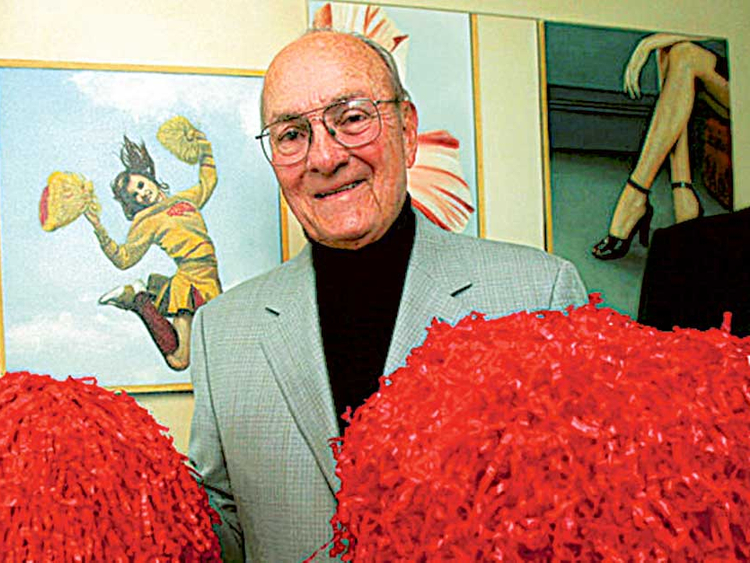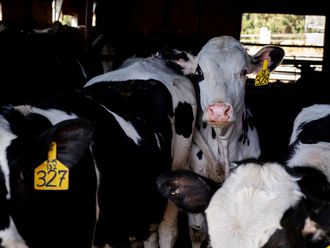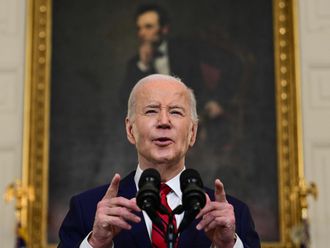
Washington: Lawrence R. Herkimer, who elevated cheerleading into an aspirational goal for generations of youth and a highly successful business for himself, organising camps for would-be cheerleaders and selling the clothing and gear they would need, died Wednesday in Dallas. He was 89.
The cause was heart failure, his grandson Michael Dewberry said.
Herkimer was often called the grandfather of modern cheerleading and ‘Mr. Cheerleader’. Not only did his enterprises achieve sales of $50 million (Dh184 million) a year, he also patented the pom-poms that have become a staple of cheerleading and invented a leap known as the “Herkie jump” that is widely used by squads across the country.
Herkimer had been a scholarship student and head cheerleader at Southern Methodist University in Dallas when, after graduating in 1948, he borrowed $600 from a friend of his father-in-law to begin what would amount to an American cheerleading industry, setting up shop in his garage.
His first cheerleading camp attracted 52 girls and one boy; in his second year, enrolment climbed to 350.
At first, he continued to teach physical education and statistics at SMU. But he said: “I was making more money in the summertime in camps than I was teaching all year at SMU. So I quit teaching and went full time into cheerleading. It grew by leaps and bounds.”
Eventually, one of the companies he founded, the National Cheerleaders Association, was running camps at 430 sites staffed by 1,500 instructors and training 150,000 would-be cheerleaders annually.
He published a magazine for cheerleaders called Megaphone, and his Cheerleader Supply Co. put out catalogues offering instruction manuals, sample cheers, sweaters, skirts, emblems, badges and other items. He also was the co-author, with Phyllis Hollander, of The Complete Book of Cheerleading (1975).
Herkimer said that anticipating the advent of coloor television inspired him to create kaleidoscopic crepe-paper pom-poms.
“I figured there had to be something more colourful on the field than a chrome stick that the cheerleaders twirled,” he said, “so I got the idea to put some coloured paper on a stick.”
While cheerleading at scholastic sports events dates to the 19th century, Herkimer boasted that he took it “from the raccoon coat and pennant to greater heights,” especially after World War II, when more women began enrolling in the nation’s colleges.
By the time he sold his various cheerleading enterprises in 1986 for an estimated $20 million, he was considered the undisputed pacesetter of the cheerleading business.
Lawrence Russell Herkimer was born in Muskegon, Michigan, on October 14, 1925. His father, Nilan, was a salesman. His mother was the former Lenola Gilfus. The family moved to Dallas when he was 4.
He was a cheerleader in high school and served in the Navy during World War II.
As head cheerleader at SMU, he was on the sidelines when star running back and future Hall of Famer Doak Walker was on his way to winning the Heisman Trophy in 1948, the year Herkimer graduated with a bachelor’s of science degree. He earned a master’s degree from the University of Illinois.
One of his notable contributions to cheerleading was the “Herkie jump.” To execute it, swing the right arm upward to begin your leap, and as you depart the ground, your left hand clutches your hip while the left leg is propelled out parallel to the ground and the right leg is drawn back.
But his wife, the former Dorothy Brown, cautioned early on that he would not be able to perform the manoeuvre indefinitely and persuaded him to start making and selling supplies, among them a 16-pleat twirling cheerleader skirt she designed.
He is survived by three daughters, Marilyn Weber, Sharon Dewberry and Carolyn Cooper; seven grandchildren; and a sister, Bonnie Richards.
While Herkimer spent most of his time on the sidelines, he had fleeting moments of fame. He appeared once on the television quiz show “What’s My Line?” and his name was once a question on “Who Wants to Be a Millionaire” and, in 1984, in The New York Times’ Saturday News Quiz. (The question was: Lawrence Herkimer, a Dallas businessman, is a man of exceptionally good cheers. Explain.)
“I feel we have a recession-proof business,” he said in 1990. “If times get bad, a father would sell the boat before he would tell his daughter she can’t have pompons and her cheerleader sweater.”
— New York Times News Service













